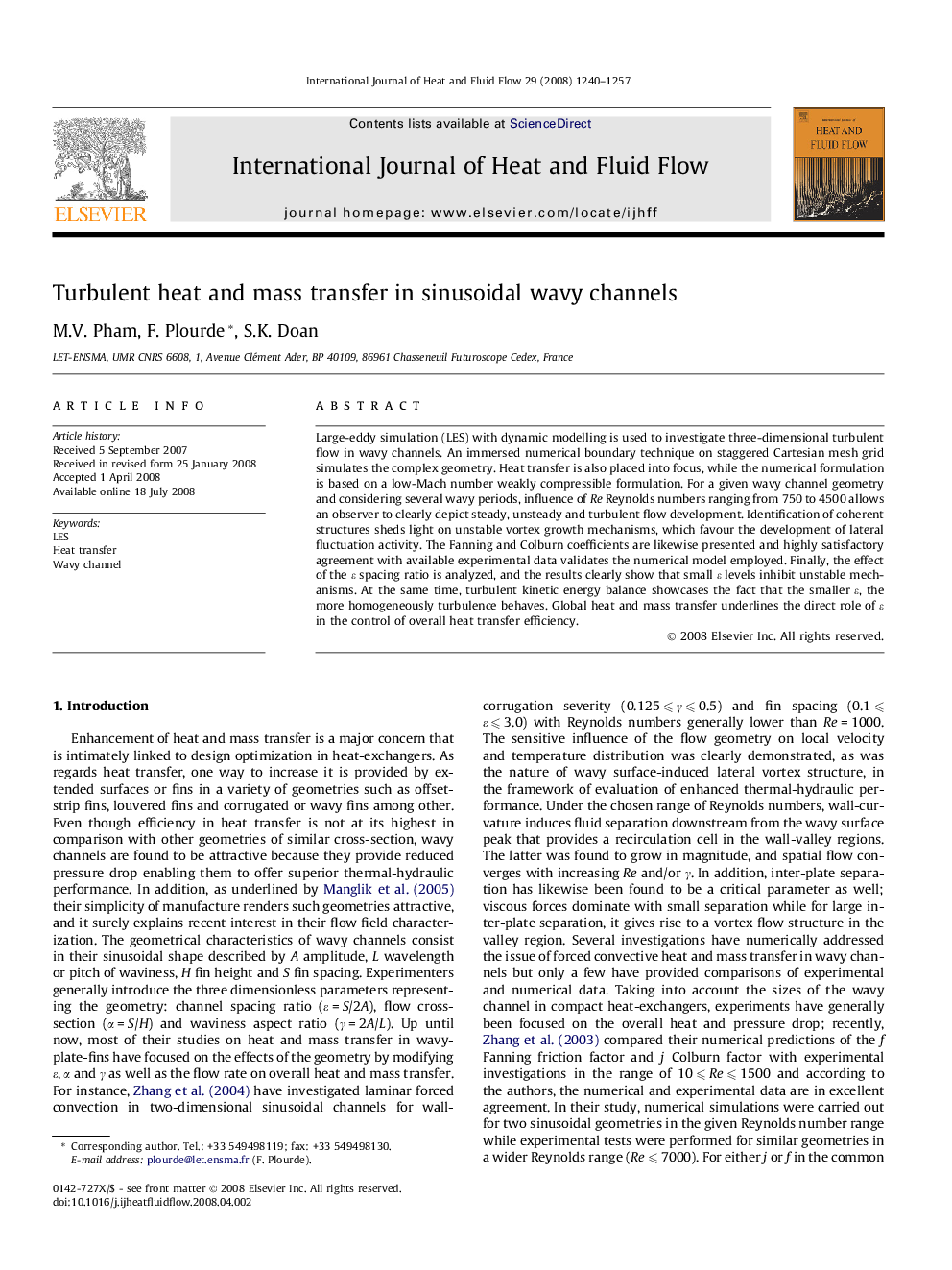| Article ID | Journal | Published Year | Pages | File Type |
|---|---|---|---|---|
| 655664 | International Journal of Heat and Fluid Flow | 2008 | 18 Pages |
Large-eddy simulation (LES) with dynamic modelling is used to investigate three-dimensional turbulent flow in wavy channels. An immersed numerical boundary technique on staggered Cartesian mesh grid simulates the complex geometry. Heat transfer is also placed into focus, while the numerical formulation is based on a low-Mach number weakly compressible formulation. For a given wavy channel geometry and considering several wavy periods, influence of Re Reynolds numbers ranging from 750 to 4500 allows an observer to clearly depict steady, unsteady and turbulent flow development. Identification of coherent structures sheds light on unstable vortex growth mechanisms, which favour the development of lateral fluctuation activity. The Fanning and Colburn coefficients are likewise presented and highly satisfactory agreement with available experimental data validates the numerical model employed. Finally, the effect of the ε spacing ratio is analyzed, and the results clearly show that small ε levels inhibit unstable mechanisms. At the same time, turbulent kinetic energy balance showcases the fact that the smaller ε, the more homogeneously turbulence behaves. Global heat and mass transfer underlines the direct role of ε in the control of overall heat transfer efficiency.
